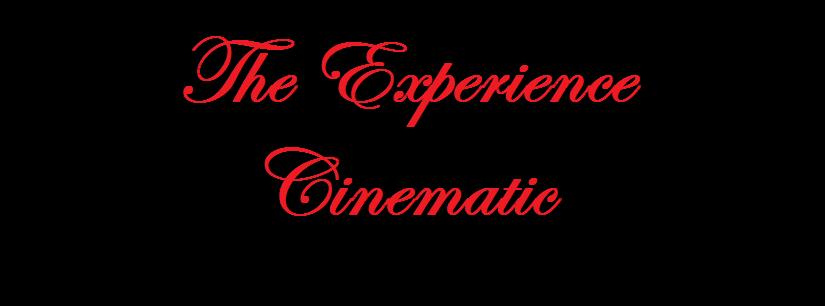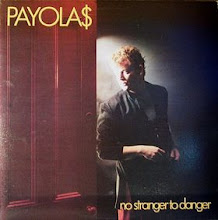
Let me get this out of the way: I am not exactly the biggest fan of the auteur theory, or at least in the way that it has been adopted by modern Hollywood and other film industries. The idea of an auteur, of a discernable author to be found in a director who, in a very personal way shapes a given film, is wonderful in theory and problematic in practice most of the time, with very few directors honestly having a firm sense of being personal authors over a given work. Yet in practice, we frequently see the cursed “Film By” credit on films by the most impersonal of filmmakers, including Brett Ratner and Ron Howard. At best, their work is workman like and effective at carrying a film; at worst, vapid and hollow, doing little more than pointing a camera and calling shots. These are not filmmakers who a filmgoer gains any insight or understanding of, a point which even Michael Bay has managed to accomplish with his films, even though that personal insight amounts to little more than “I like to blow things up.”
So it is always nice to come across a film like How to Get Ahead in Advertising from writer/director Bruce Robinson, a film which is a work of a legitimate auteur. There is not one moment in this film where the guiding hand of Robinson isn’t to be found, not one scene where the audience cannot tell that Robinson is talking directly to them. This is all the more apparent because when all is said and done, regardless of how funny the film may be, How to Get Ahead in Advertising is a film boiling over with anger. And if there is one emotion that everyone can recognize, its anger.
The story of How to Get Ahead in Advertising is as simple as it is absurd: advertising executive Dennis Bagley (Richard E. Grant) is stressed out over his inability to find a way to sell a new brand of pimple cream. This stress reaches a point where Bagley seemingly snaps, turning against advertising at the same time he develops a stress boil. His wife (Rachel Ward) believes that Bagley has gone almost completely insane when Bagley starts to claim that the boil is talking to him and other people. As the boil grows however, it begins to take control of Bagley’s life, leading to a series of surprising and disturbing developments which leaves Julia questioning her husband’s supposed insanity.
While consumerism and advertising are the obvious targets that Robinson attacks in the film, Robinson is most interested in the way language has been usurped, twisted and corrupted by the forces which control mass media, distorting language to the point that greed, hate and other vile concepts are naturalized and accepted. Moreover, the manipulation and alteration of language has made resistance within the world of the film impossible, with Bagley having so internalised the corruption that his initial resistance manifests as signs of insanity.
If some of these concepts sound familiar, they should, as they in part derive from the concepts of “newspeak” and “doublethink” from George Orwell’s masterpiece of fiction, 1984, which is directly referenced in the film and is the key intertext needed to understand the themes of How to Get Ahead in Advertising. Robinson goes beyond suggesting that advertising is engaged in a similar manipulation and reduction of language found in Orwell’s text by expanding the concept to show how visual arts have also been co-opted in a similar manner, thus evoking the cinematic apparatus in its criticism. The media not only have the power to shape realit here, but do so by naturalising the worst aspects of humanity.
Given this inclusion of commercial cinema as being part of the problem, Robinson deliberately sets out to make the film as artificial as possible in order to avoid being guilty of the very things he is attacking: the characters are more caricatures than real people, the situations that the characters find themselves in are contrived, and even the visual look of the film is heightened to appear clearly constructed as the film goes forward, including the practical effects which are deliberately rubbery and cheep. In the central role, Richard E. Grant is allowed to go for broke, brining a level of megalomania that seems more in place with a 1960s Bond villain, with Rachel Ward’s performance coming off as natural only by comparison.
All of this will likely be off putting for audiences expecting a narrative and character driven film. While the central premise would seem to be open to psychoanalysis as an analytical approach, particularly given the similarities of the premise to the concept of body horror, How to Get Ahead in Advertising only uses a loose narrative as a means of exploring and “dramatising” the ideas and concepts it seeks to talk about, with characters functioning as overt symbols. As an idea driven film however, the approach is appropriate and seeks to engage the audience on an intellectual level rather than an emotional level.
The irony of this approach though is that it does damn the film, in a manner of speaking, with regards to its audience. The bluntness of the film’s approach will likely be off putting to those seeking a greater sense of subtlety and complexity from the film, yet given the film’s resistance to commercial narrative practice and emphasis on ideas over cohesion and character, the film will likely be off putting to the audience Robinson’s arguments would be most important to. Robinson himself seems to be aware of this, as an early scene in which Bagley tries to explain to the very nature of language manipulation fails due not only to resistance from average consumers to the idea, but also because Bagley openly distains these people.
As such, How to Get Ahead in Advertising is hideously bleak film, while being a conflicting but fascinating work of art. Within the context of similarly themed films, such as David Cronenberg’s Videodrome, the film will likely be found lacking, but it remains a complex and engaging work none the less worthy of viewing and study. Most importantly though, for those seeking a film looking to know and feel the artist behind a work, How to Get Ahead in Advertising is Bruce Robinson at his most raw.


No comments:
Post a Comment
What Is Your Cinematic Experience? Post Here!